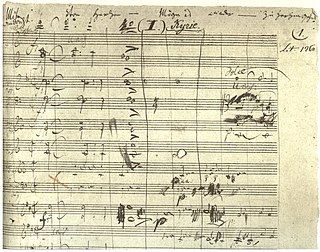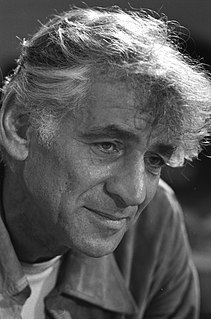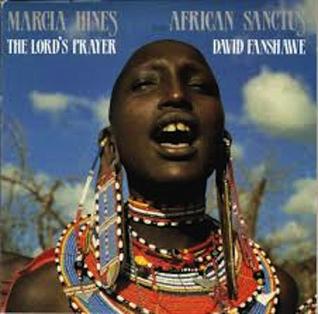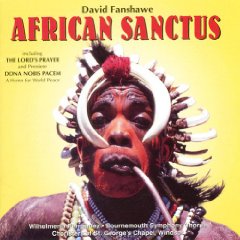
The Missa solemnis in D major, Op. 123, is a Solemn Mass composed by Ludwig van Beethoven from 1819 to 1823. It was first performed on 7 April 1824 in Saint Petersburg, Russia, under the auspices of Beethoven's patron Prince Nikolai Galitzin; an incomplete performance was given in Vienna on 7 May 1824, when the Kyrie, Credo, and Agnus Dei were conducted by the composer. It is generally considered one of the composer's supreme achievements and, along with Bach's Mass in B minor, one of the most significant Mass settings of the common practice period.

Loyset Compère was a Franco-Flemish composer of the Renaissance. Of the same generation as Josquin des Prez, he was one of the most significant composers of motets and chansons of that era, and one of the first musicians to bring the light Italianate Renaissance style to France.
The Armed Man is a mass by Welsh composer Karl Jenkins, subtitled "A Mass for Peace". The piece was commissioned by the Royal Armouries Museum for the Millennium celebrations, to mark the museum's move from London to Leeds, and it was dedicated to victims of the Kosovo crisis. Like Benjamin Britten's War Requiem before it, it is essentially an anti-war piece and is based on the Catholic Mass, which Jenkins combines with other sources, principally the 15th-century folk song "L'homme armé" in the first and last movements. It was written for SATB chorus with soloists and a symphonic orchestra. Guy Wilson, then master of the museum, selected the texts for the mass.
The ordinary, in Roman Catholic and other Western Christian liturgies, refers to the part of the Mass or of the canonical hours that is reasonably constant without regard to the date on which the service is performed. It is contrasted to the proper, which is that part of these liturgies that varies according to the date, either representing an observance within the liturgical year, or of a particular saint or significant event, or to the common which contains those parts that are common to an entire category of saints such as apostles or martyrs.

David Arthur Fanshawe was an English composer and self-styled explorer with a fervent interest in world music. His best-known composition is the 1972 choral work African Sanctus.
Dona nobis pacem is a phrase in the Agnus Dei section of the mass. The phrase, in isolation, has been appropriated for a number of musical works, which include:

The Missa brevis in D, Op. 63, is a setting of the Mass completed by Benjamin Britten on Trinity Sunday, 1959. Set for three-part treble choir and organ, it was first performed at London's Roman Catholic Westminster Cathedral on 22 July of the same year. Britten composed the Mass for George Malcolm's retirement as organist and choirmaster at Westminster: the printed dedication reads "For George Malcolm and the boys of Westminster Cathedral Choir". It was Britten's first and only setting of the Mass. Malcolm's live recording, from a service at the cathedral, lasts ten minutes.

Mass of the Children is a major work of English composer John Rutter. It is a non-liturgical Missa brevis, with the traditional Latin and Greek Mass text interwoven with several English poems.
The Harmoniemesse in B-flat major by Joseph Haydn, Hob. XXII:14, Novello 6, was written in 1802. It was Haydn's last major work. It is because of the prominence of the winds in this mass and "the German terminology for a kind of wind ensemble, Harmonie," that this mass setting is called "Harmoniemesse" or "Wind Band Mass". Besides flute, 2 oboes, 2 clarinets, 2 bassoons, 2 horns in B-flat, 2 trumpets in B-flat, the mass also calls for choir, timpani, strings, and organ, the latter supplying figured bass for most of the duration.

The Missa brevis No. 9 in B-flat major by Wolfgang Amadeus Mozart, K. 275/272b, was probably written before September 1777 for Salzburg. The mass is scored for SATB soloists, SATB choir, violin I, violin II, 3 trombones, string bass, and organ.
Austrian composer, Michael Haydn's Missa Hispanica or Missa a due cori, Klafsky I:17, MH 422, was presumably written for Spain, but there is no evidence of its ever having been performed there during Haydn's lifetime. The mass is scored for 2 oboes, 2 bassoons, 2 horns in low C, F and G, 2 trumpets in C, timpani, strings, basso continuo, SATB soloists, and two mixed choirs.
Order of Mass is an outline of a Mass celebration, describing how and in what order liturgical texts and rituals are employed to constitute a Mass.
Missa Sanctissimae Trinitatis in A minor, ZWV 17, is the a vocal-instrumental sacred work, written by Czech Baroque composer Jan Dismas Zelenka. It was completed in 1736 as the first of five high masses he wrote in the last ten years of his life.

The Missa Brevis by Leonard Bernstein is a musical setting of parts of the mass ordinary in Latin for a mixed a cappella choir with countertenor solo and percussion. It is also Bernstein's last complete choral work, due to his death a year after its completion in 1989.

Mass No. 1 in F major, D 105, is a mass composed by Franz Schubert in 1814. It is scored for two soprano soloists, two tenor soloists, alto and bass soloists, SATB choir, oboe, clarinet, bassoon, 2 horns, violin I and II, viola, and basso continuo. It was the first of Schubert's masses to be performed, and is of the missa solemnis type.
Missa Sancti Nicolai, Mass No. 6 in G major, Hob. XXII/6, also known as the Nicolaimesse, is a mass by Joseph Haydn, composed around 1772 and revised in 1802.
The Missa Votiva is a mass composed by the Czech Baroque composer Jan Dismas Zelenka in 1739, Dresden. The Missa Votiva is about seventy minutes long, and its twenty parts range from forty-five seconds to over seven minutes in length.
Missa L'Homme armé is a part of a mass by Giovanni Pierluigi da Palestrina. It was published in 1570 and consists of four movements.

"The Lord's Prayer" is a song written by David Fanshawe for his 1972 choral work African Sanctus.

The Missa brevis, Op. 102, is a Latin mass of short duration composed by Knut Nystedt in 1984. He scored it for a mixed choir a cappella. It was also published by Carus-Verlag in 2003.










